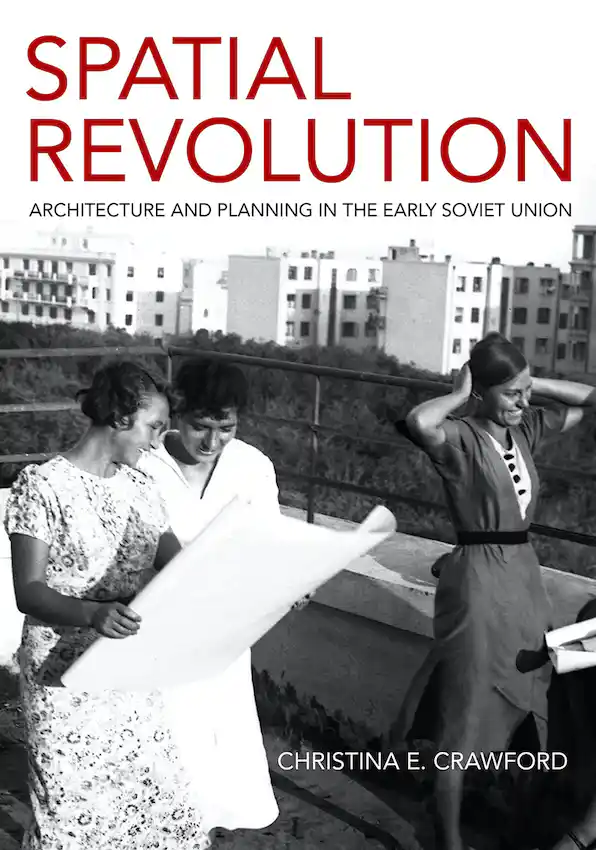Spatial Revolution: Architecture and Planning in the Early Soviet Union
by Christina E. Crawford
Christina E. Crawford is Assistant Professor of Modern and Contemporary Architecture in the Art History Department.
Spatial Revolution is the first comparative parallel study of Soviet architecture and planning to create a narrative arc across a vast geography. The narrative binds together three critical industrial-residential projects in Baku, Magnitogorsk, and Kharkiv, built during the first fifteen years of the Soviet project and followed attentively worldwide after the collapse of capitalist markets in 1929. Among the revelations provided by Christina E. Crawford is the degree to which outside experts participated in the construction of the Soviet industrial complex, while facing difficult topographies, near-impossible deadlines, and inchoate theories of socialist space-making.
Crawford describes how early Soviet architecture and planning activities were kinetic and negotiated and how questions about the proper distribution of people and industry under socialism were posed and refined through the construction of brick and mortar, steel and concrete projects, living laboratories that tested alternative spatial models. As a result, Spatial Revolution answers important questions of how the first Soviet industrialization drive was a catalyst for construction of thousands of new enterprises on remote sites across the Eurasian continent, an effort that spread to far-flung sites in other socialist states—and capitalist welfare states—for decades to follow.
“Christina Crawford's brilliant, path-breaking book fundamentally renews knowledge of the interrelations between avant-garde strategies and urban developments in the first fifteen years of Bolshevik power. She has mapped the political networks and the professional cultures at play and unveiled how concretely planned—or not—the socialist economy was.” Jean-Louis Cohen, Institute of Fine Arts, New York University
“Christina E. Crawford presents the Soviet spatial revolution as a process rather than as a series of political ruptures, and her theoretical and terminological richness promises to reshape the fields of architecture and urban history.” Heather DeHaan, Binghamton University, author of Stalinist City Planning

More places to read or download this book
From the author

